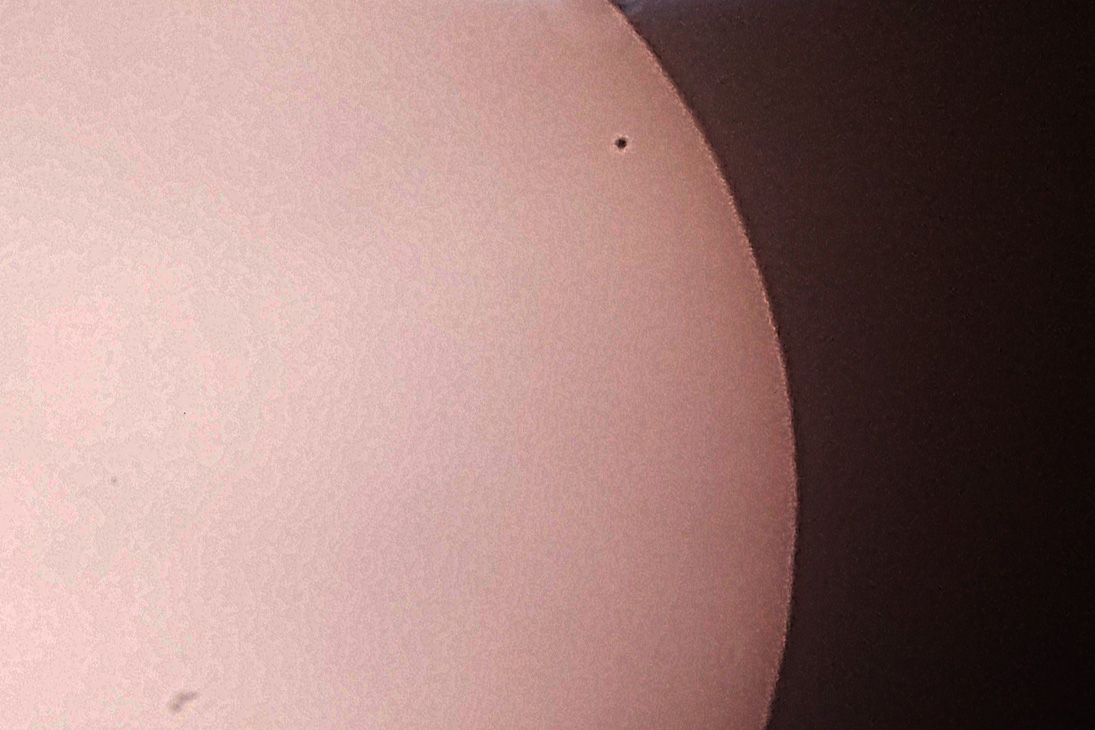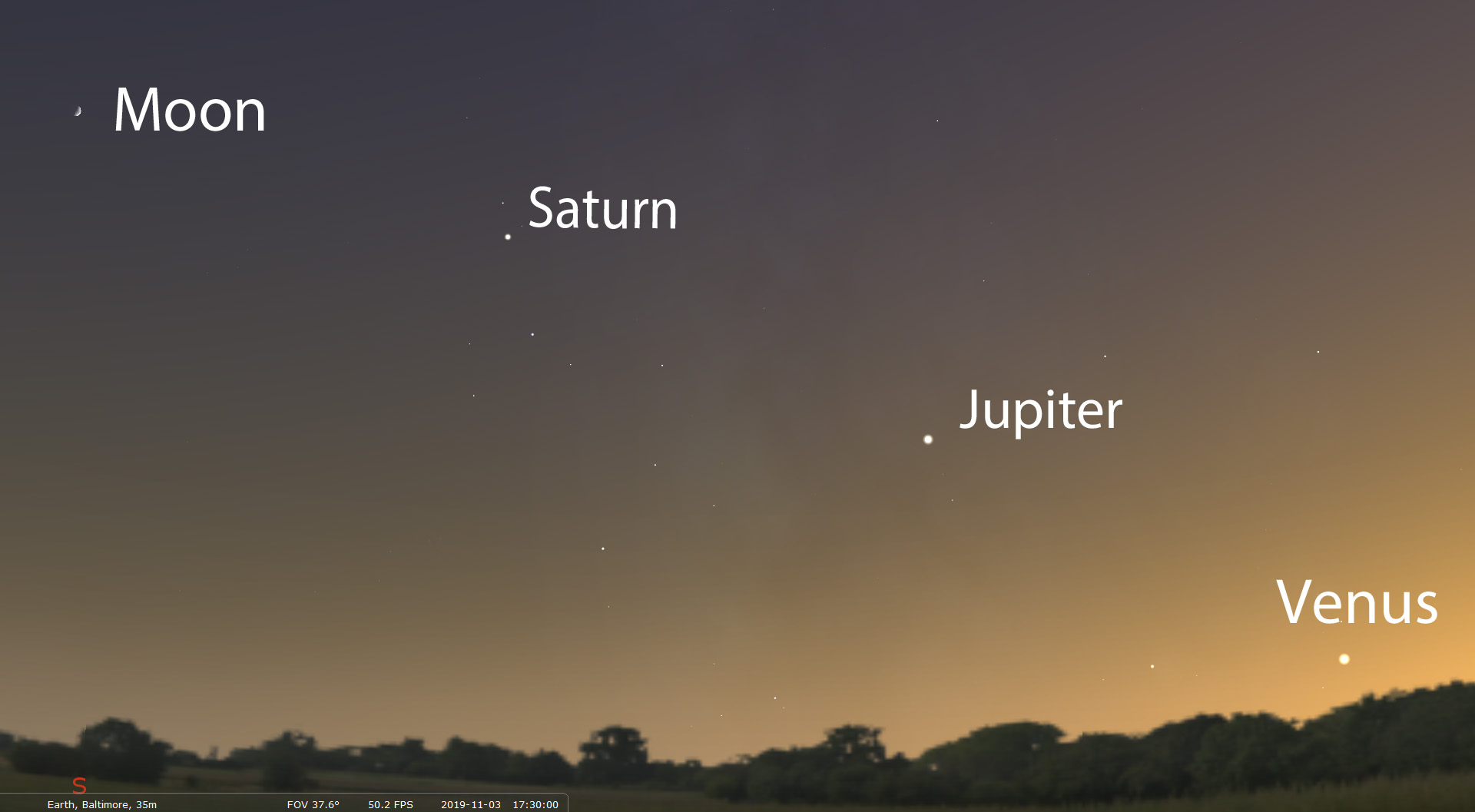Mercury to Transit Sun on Vets’ Day
Three bright planets are visible in the evening sky in early November. But first, let’s talk about a fourth planet, Mercury, and a rare opportunity to observe it during the daytime on Veteran’s Day.
Mercury and Venus are the two major planets closer to the sun than Earth, with their orbital paths located within Earth’s own orbit. Each planet’s orbit is in a slightly different plane, and the Earth’s orbital plane is known as the “Ecliptic.”
“Inferior conjunction” is when, in the course of its orbit, one of these inner planets passes between Earth and sun. Because of the relative tilt of their orbital planes in relation to the Ecliptic, they pass either above or below the sun as viewed by us on Earth.
But when an inner planet at inferior conjunction is located near the point where its orbital path intersects the ecliptic a transit occurs in which an observer, using a properly filtered telescope, can safely view the planet crossing in front of the solar disk. The next such transit for Mercury occurs on Monday, November 11.
Transits of Mercury currently occur only in the months of May or November. The previous transit of Mercury occurred in 2016, but you’ll have to wait until the year 2032 for the next one!
Caution must be taken with observing the sun. Improper optical filtration can lead to eye damage. The Westminster Astronomical Society is planning to hold public observing on the day of the transit. For more information on times and locations, see the calendar at WestminsterAstro.org.
The local circumstances for November 11 are as follows. Sunrise occurs at 6:40 a.m. Mercury’s tiny disk reaches the edge of the sun at 7:36 am. This is 1st contact. Mercury’s disk is entirely within the solar disk at 7:37 a.m. This is 2nd contact. Mid transit occurs at 10:20 a.m. Mercury reaches the opposite edge of the solar disk at 01:02 p.m. This is 3rd contact. The transit ends two minutes later. This is 4th contact.

Venus transits are rarer. The last one happened in 2012. There won’t be another Venus transit until next century in 2117.
Best time to view Venus is around 5:30 p.m. just above the west-southwestern horizon. At that time on November 3 the crescent moon is due south. Between the moon and Venus, roughly evenly spaced are the planets Saturn and Jupiter. On subsequent nights the moon will be located a little farther to the east.

–Curt Roelle
